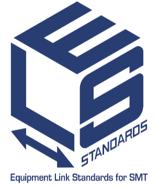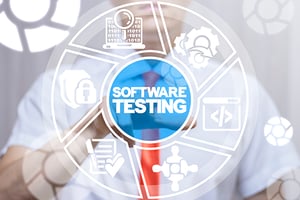 As a young boy, I liked to work on the family car with my dad. He taught me how to change the oil, check the spark plugs, replace the shock absorbers, adjust the timing and lots of other tasks that were common on older cars. I remember the first time he let me use the socket wrench. I thought it was the greatest tool ever invented. I could loosen bolts, then moving a small switch into a different position, the same wrench could now tighten bolts. It is a very versatile tool, one I still make sure to have handy to this day.
As a young boy, I liked to work on the family car with my dad. He taught me how to change the oil, check the spark plugs, replace the shock absorbers, adjust the timing and lots of other tasks that were common on older cars. I remember the first time he let me use the socket wrench. I thought it was the greatest tool ever invented. I could loosen bolts, then moving a small switch into a different position, the same wrench could now tighten bolts. It is a very versatile tool, one I still make sure to have handy to this day.
I appreciate having well-designed tools available that can be used in a variety of situations. In my career, these tools have sometimes been software tools. I have spent a lot of my career working with equipment connectivity standards and seeing the benefits of having process equipment connected to a factory control system. Whether it is for full equipment control, or just to monitor and gather data from the equipment, having a robust connection to equipment is valuable.
When I first started connecting equipment to factory control systems, the GEM standard had not been finalized. There was a lot of variability in the SECS message implementations available from the different equipment vendors. I was almost always able to get the equipment connected to the factory system, but generally each connection was custom to that equipment vendor and equipment type. This meant that each connection took far too much time to complete and made supporting different equipment very difficult.
Once the GEM standards were finalized and adopted, there was now a versatile way to provide consistency and reusability across equipment types and across equipment vendors. Connecting to different types of equipment was principally a configuration task instead of a custom coding task.
In addition, industry standard compliance test tools were developed to ensure compliance with the GEM standards and harden the implementations for reliable production use. This increased reliability helped drive the adoption and implementation of GEM in the global semiconductor front-end manufacturing industry. As a result, GEM has become a well-established reliable communication standard that is widely used and accepted.
As other segments of the semiconductor and related electronics manufacturing markets have looked to connect equipment to their factory control systems, many have evaluated GEM and other communication standards to provide this functionality. In some cases, GEM was considered too old, too complex, or not a good fit. But, like the versatile socket wrench, many industry segments have seen the value of the stability and proven nature of GEM. They found that the socket wrench (GEM) was the right tool—they just needed a different sized socket (industry-specific guidance) to fit their needs. Let’s look at a few examples.
SEMI PV2
 In 2007, when the photovoltaic industry wanted to increase manufacturing efficiencies and reduce costs, they looked to implement industry-wide standards. They formed the Photovoltaic Equipment Interface Specification Task Force to define the interface between the factory control system and the equipment.
In 2007, when the photovoltaic industry wanted to increase manufacturing efficiencies and reduce costs, they looked to implement industry-wide standards. They formed the Photovoltaic Equipment Interface Specification Task Force to define the interface between the factory control system and the equipment.
The task force created two working sub-teams to evaluate existing solutions and the requirements of the industry. Several existing solutions such as SECS/GEM, EDA, OPC-UA, and XML were evaluated based on functionality, reliability, extendibility, and the ability to be integrated into different environments. The conclusion of both teams was to build on the SEMI GEM (E30) standard.
The socket wrench (GEM) was the right tool, and a new socket (SEMI PV2) provided the required fit for their equipment and industry.
HB-LED
In 2010, when the high-brightness light-emitting diode (HB-LED) industry started their search for connectivity standards. They needed something that would allow low-cost, common hardware and software interfaces, and other means to enable HB-LED factories to effectively utilize multiple equipment types from multiple vendors in a highly automated manufacturing environment.
This search found that the best course was to leverage the functionality, reliability, and extendibility of GEM. The SEMI HB4: Specification of Communication Interfaces for High-Brightness LED Manufacturing Equipment (HB-LED ECI) defines the behavior of HB-LED equipment and is based on the SEMI E30 (GEM) standard.
Again, the socket wrench (GEM) was the right tool. What they needed was a socket (HB4) that would meet the needs of their industry.
PCBECI
In February 2019, the Taiwan Printed Circuit Association (TPCA) initiated an activity seeking to boost network connectivity of PCB equipment and help PCB makers implement smart manufacturing practices in the industry.
The result of this effort was the publication in August of 2019 of the SEMI A3: Specification for Printed Circuit Board Equipment Communication Interfaces (PCBECI). This is a robust and comprehensive shop-floor communication standard that specifies the detailed, bidirectional communications needed to improve productivity and reduce the costs to develop equipment interfaces for PCB manufacturing. The SEMI A3 (PCBECI) standard is based on the SEMI E30 (GEM) standard.
Yet again, the socket wrench (GEM) was the right tool and all that was needed was a socket for their specific needs (PCBECI).
It is understandable to think of GEM as an old and complex standard. It has been around for years and can be difficult to understand. However, it has continued to be reviewed and updated as manufacturing needs have changed. As different market segments have looked for equipment communication standards to meet their specific needs, several have found that the functionality, reliability, extendibility and the ability to be integrated into different environments provided by GEM was the right tool. All that was needed were some companion specifications related to GEM to provide a better fit for their requirements.














 Many software companies can do this is through the way they use software versioning. It is common for software companies to use a major.minor.patch.build software versioning scheme, for example iTunes 12.3.1. This type of software versioning allows the software company to communicate the scale and impact of the changes in the release to their customers. A change in the “major” release number indicates to customers that there are some significant changes in this release that may impact the way it interacts with the product. The customer will likely need to make code changes or procedural changes when upgrading to such a release. A change to the “minor” release number denotes that there are multiple changes in the release, but customers should see only minor, or possibly no changes, in the way they use the product. A minor release may include some small new features that could potentially require code changes if the customers wants/needs those new features. A “patch” release is generally used to address a specific issue and should not change the customer experience with the software. The build number is most often provided to help the software company when researching a question or customer reported defect.
Many software companies can do this is through the way they use software versioning. It is common for software companies to use a major.minor.patch.build software versioning scheme, for example iTunes 12.3.1. This type of software versioning allows the software company to communicate the scale and impact of the changes in the release to their customers. A change in the “major” release number indicates to customers that there are some significant changes in this release that may impact the way it interacts with the product. The customer will likely need to make code changes or procedural changes when upgrading to such a release. A change to the “minor” release number denotes that there are multiple changes in the release, but customers should see only minor, or possibly no changes, in the way they use the product. A minor release may include some small new features that could potentially require code changes if the customers wants/needs those new features. A “patch” release is generally used to address a specific issue and should not change the customer experience with the software. The build number is most often provided to help the software company when researching a question or customer reported defect.


